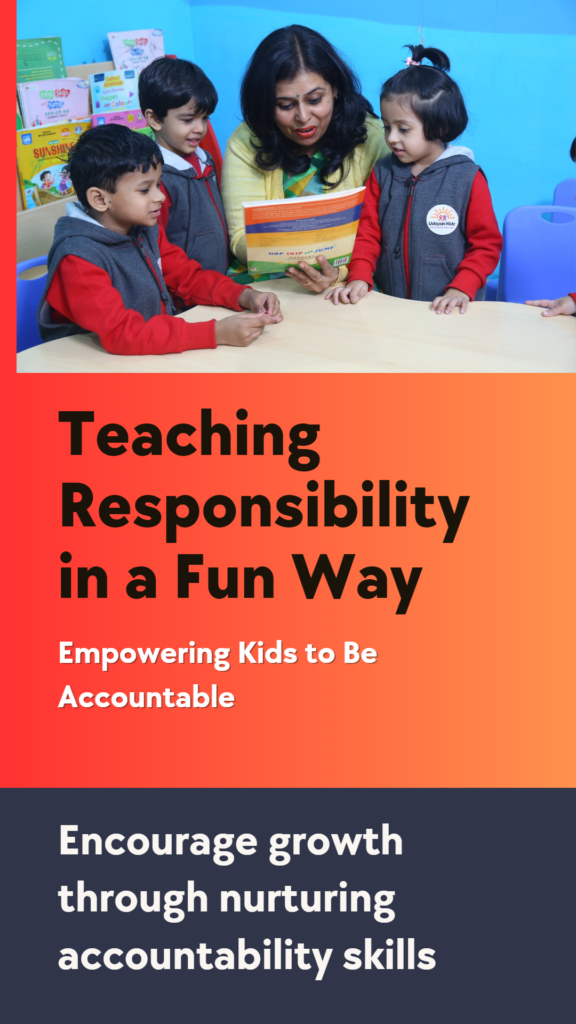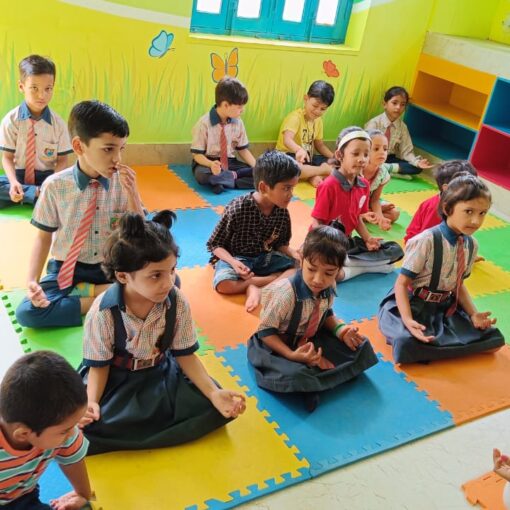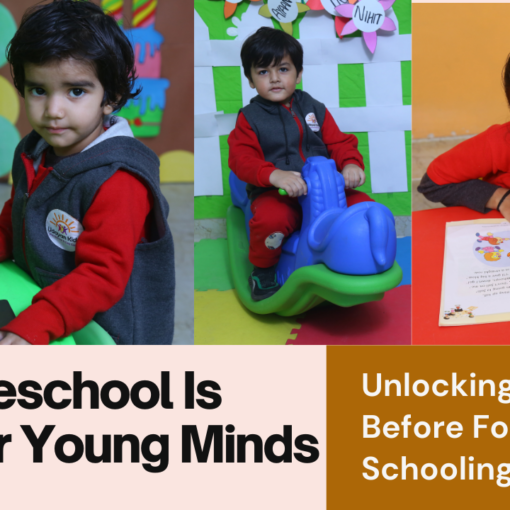
Teaching responsibility to children is crucial to their development, helping them grow into trustworthy, dependable individuals. This blog provides a comprehensive guide for educators and parents to introduce the concept of responsibility to young learners through engaging discussions and practical activities.
What Does It Mean to Be Responsible?
Being responsible means doing what you are supposed to do, taking care of things, and making good choices. It involves understanding the importance of fulfilling duties at home, school, or in social situations.
Example Discussions:
- At Home: “Cleaning up my toys after playing and helping mummy and papa with chores when asked.”
- At School: “Bringing my homework back on time and listening to my teacher during lessons.”
- Why It Matters: “Responsibility helps us earn trust from others, keeps us safe, and helps everything run smoothly.”
Teaching Responsibility Through Classroom Activities
Engaging children in activities demonstrating responsibility can make the concept more tangible and easier to grasp.
- Story Time:
- Choose age-appropriate storybooks that illustrate responsibility. After reading, discuss how the characters showed responsibility and how it made them feel.
- Role-Playing Scenarios:
- Create simple scenes where children can act out responsible behaviors, like cleaning up after themselves, helping a friend, or following classroom rules. This helps them understand responsible actions.
- Responsibility Chart:
- Create a classroom responsibility chart where each child has a specific task, such as watering plants or organizing books. Rotate responsibilities weekly or daily so everyone gets a chance to contribute.
- Craft Activities:
- Have children create a “Responsibility Tree” or “Responsibility Flower,” where each leaf or petal represents a responsible action they can take, such as “Sharing,” “Cleaning up,” or “Listening.”
- Circle Time:
- Hold regular meetings where children can discuss examples of responsibility they have seen or experienced. Encourage them to share stories or instances where they felt proud of being responsible.
- Responsibility Pledge:
- Display a pledge prominently in the classroom and recite it regularly until it is memorized:
- I promise to be responsible every day, By helping out and showing the way. I’ll tidy up and share with care, Respect others and always be fair. I’ll do my best in all I do, Because being responsible makes me true!
- Display a pledge prominently in the classroom and recite it regularly until it is memorized:
- Field Trip or Outdoor Activity:
- Plan a nature walk or visit to a local park where children can discuss responsibilities like taking care of plants and animals, keeping the environment clean, and respecting public spaces.
Also read Helping Hands: Teaching Responsibility in Children
The Importance of Responsibility
Responsibility is a key trait that helps children grow into well-rounded individuals. By integrating it into everyday activities and discussions, we can help them understand its importance and how it positively impacts their lives.
As children practice responsibility, they learn to take ownership of their actions, earn trust, and contribute positively to their surroundings. Whether through small tasks at home or collaborative projects at school, cultivating accountability from a young age sets the foundation for a responsible and dependable adulthood.
At Udayan Kidz Preschool and Day Care Center, we believe in nurturing these values from the very beginning. Our programs are designed to help children develop essential life skills, including responsibility, through fun and engaging activities.
Explore how Udayan Kidz Preschool and Day Care Center integrates responsibility into its curriculum and discover more about our approach to early childhood education.





One thought on “Cultivating Accountability: A Guide to Teaching Responsibility to Children”